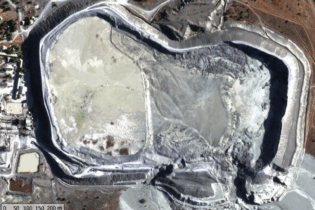We are constantly confronted with the news that civil engineering is one of the priority scarce skills that South Africa needs to ensure the creation, maintenance and development of infrastructure that would lead to social and economic growth.
Simultaneously, South Africa is losing qualified engineers to other countries and disciplines. And, SANRAL (South African National Roads Agency Limited) almost lost a valuable asset. The loss of competent professionals is damaging to South Africa whether through a lack of project roll-out, economic downturn,greener pastures within and outside the country, or personal frustration with inadequately qualified government officials in charge of procurement procedures. A concerted effort should be made to avoid further loss of this scarce resource. For South Africa to meet the needs of service delivery to communities, it will be imperative for all tiers of government to make use of the existing resource, which primarily consists of pale, ageing males with loads of knowledge, experience and wisdom. The much sought-after turnaround strategies,which have been tried in recent years,can only come to fruition with the application of this wisdom through direct intervention, knowledge transfer to young engineers through the ENERGYS programme of the South African Institution of Civil Engineering (SAICE) – this will affect adequate and appropriate service delivery well into the future. What lies at the heart of producing civil engineers with the professional expertise, managerial competencies, experience and wisdom to start a world-class business/venture? What is the impetus that would activate this process? Where does the responsibility belong – home, school, university or the industry? Are mentoring and coaching the links to creating this ‘creature’? How does it work? Manglin Pillay, CEO of SAICE, sketches a scary scenario: At a university of technology, the lecturer asks the cream of the crop of firstyear civil engineering students:“How many degrees in a half circle?” He points to a youngster sitting in the third row. The student whispers something;the lecturer draws closer and says: “Louder please.” The student mumbles: “Sir, it depends on the size of the half circle.” In 2011 about 495 000 learners sat for their matric examinations. Only 12% passed both core maths and physical science with more than 40%. This is the pool from where all professions come to drink. According to Allyson Lawless’ research document,Numbers and Needs, about 1%of those who write this examination will enter into tertiary engineering programmes. However, if we think that the threat to engineering sustainability is limited to core maths and science performances and a floundering education system, we are misleading ourselves.“Engineers operate within a balance of group work and focused independent work. Written, spoken and visual communication is critical, as are group dynamics. Asking questions and challenging ideas are part of what we do. We are professionally obliged to provide creative and cost-effective solutions in a well thought through process, in an ethical manner. It is not up for debate – core maths, science, accuracy, excellent general knowledge, and appreciation for local and national political and business environments are absolute requirements. But there are also those uncomfortable components associated with emotional awareness – respect, ethics and inter-dependent professional human relations. These are the people issues – being able to effectively communicate with the boss, other seniors, contemporaries and subordinates, under all circumstances,” explains Pillay.
“I am not sure that the university can teach coming to work on time, respecting company resources, having regard for seniors, colleagues and clients, dressing appropriately and such like. This used to emanate from being part of a wholesome community which includes healthy family units, involvement in faith-based organisations, schools and other community-related avenues. Engineering seniors need to take into account that many engineering graduates come from single- or no-parent homes. The challenge is enhanced by the cultural differences that South Africa so richly enjoys. “Furthermore, learners are starting to suffer serious written and spoken impediments. Thanks to instant communication devices, the English language, which is the dominant engineering language in South Africa, is being reduced to phonetic and guttural sounds. ‘Lrnrs cum ot of skolspelnglikdis…ROTFL’[Learners come out of school spelling like this….roll on the floor laughing]. The inability to converse or write is pervading young people like a transmitted disease – what with Facebook, SMSing, tweeting and other similar e-communication products available. The instant information age is upon us, like a thief in the night. I recently interviewed a young lady and requested an essay on a pertinent civil engineering issue. Chunks of the essay were copied verbatim from online articles – Google helped us both,” says Pillay. “Previously the paradigm differences between the youth, the middle-aged and seniors were limited to differences in appreciation of music, hobbies and taste in clothing. But the youth and young engineers think and communicate differently from say ten years ago. I have noticed, however, that our training and development methods in the engineering environment have remained almost unchanged over the past 30 years – review the report or drawing over and over again, write the same lengthy compilations, advance the intelligent engineering graduate, marginalise the misfit and misunderstood graduates until they leave,” asserts Pillay. Being civil engineering professionals who boast about being solution-oriented, finding solutionsfor thesecomplex issues should surely be a priority if South Africa intends on having home-grown civil engineering professionals answer the call for service delivery in future. “While some wrestle the education system, perhaps it’s time we recreated ourselves, revised our operations and started accommodating new succession planning methods for sustainable civil engineering,” concludes Pillay. Perhaps then the question, “How many degrees in half a circle?” would not be as daunting.






